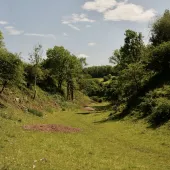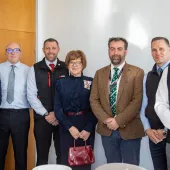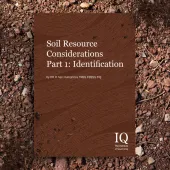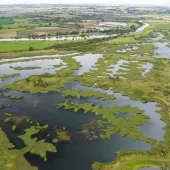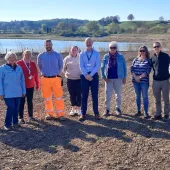Nature After Minerals in Dorset
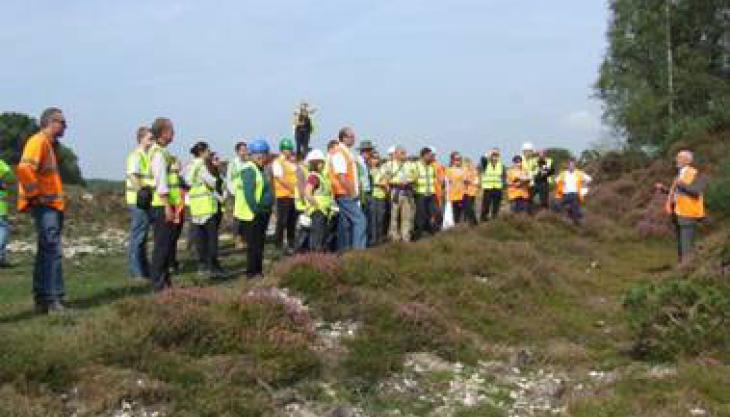
Stakeholders consider landscape-scale conservation potential through minerals restoration
A GROUP of 40 stakeholders from within and around the minerals industry recently descended on Wareham, in Dorset, to see the extensive minerals extraction work taking place at a number of sites located along Puddletown Road, on the outskirts of the town, and to consider the potential of this area to deliver for nature, in the long term.
Covering more than 250ha, the five-mile-long network of sand extraction and landfill sites along Puddletown Road offers major opportunities for lowland heathland restoration and the rare species it supports, such as the Dartford warbler, sand lizard and smooth snake.
At the event run by Nature After Minerals (NAM) – the RSPB/Natural England partnership – representatives from minerals operating companies, local planning authorities, ecological and planning consultancies, local communities and conservation bodies travelled between Binnegar Quarry, owned by SITA UK and operated by Raymond Brown Aggregates; SITA UK’s Hines landfill; Hanson UK’s Hines Pit; and Holme Sand and Ballast’s Masters Pit, seeing for themselves the extent of the potential conservation gains to be had in the area.
Such sites – if restored in the right way after extraction work ceases – can represent an excellent opportunity to replace both local and nationally important biodiversity, which has been in sharp decline in recent years. European targets aim to halt such decline by 2020.
According to NAM, with the right co-ordinated and joined-up approach, the scope for this area of Dorset to be restored and managed well into the future, in order to benefit biodiversity on a landscape scale, is immense.
Noting how these restored sites could link up with other adjoining conservation hotspots, NAM programme manager Carolyn Jewell said: ‘The Puddletown Road area of minerals extraction represents a marvellous opportunity to give something back to nature.
‘Sitting alongside the Dorset Heathlands Special Protection Area and other Sites of Special Scientific Interest, the restoration and continued management of these sites, with the needs of nature firmly in mind, could provide a vital link to other areas important to conservation. Such connectivity between sites could help enhance the biodiversity value of this beautiful part of Dorset on a truly landscape scale.’
Steve Cole, environmental and development director at Raymond Brown Aggregates, commented: ‘This was a very worthwhile exercise and helped attendees to visualize the great potential for this area to deliver for nature in the longer term.
‘While recognizing that there may be challenges and obstacles to working on such a grand scale, we do feel there is an important role we can play in looking to work with others and build on our efforts to provide for nature and local communities, following the working life of our quarries.’
James Howarth, regional manager at SITA UK, added: ‘We are delighted to be a part of this excellent initiative from NAM and we hope that the interesting discussions that took place throughout the day will lead to a greater connectivity among stakeholders and sites, for the ultimate benefit of our natural environment.’
The Dorset event was one of eight such events recently run by Nature After Minerals to highlight existing good practice in quarry restoration for people and nature, and to explore new ways of working together and capitalizing on the lessons learned.




